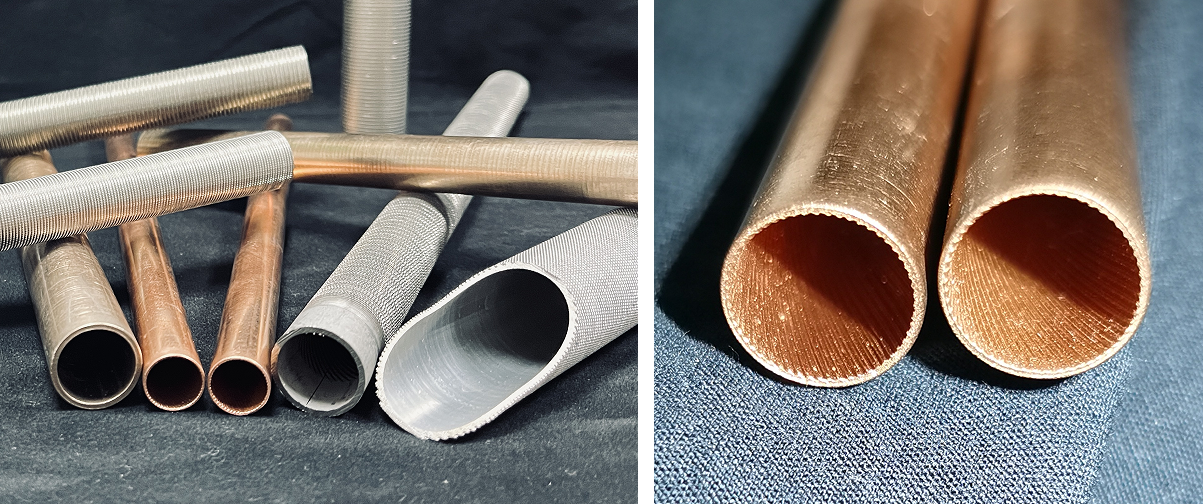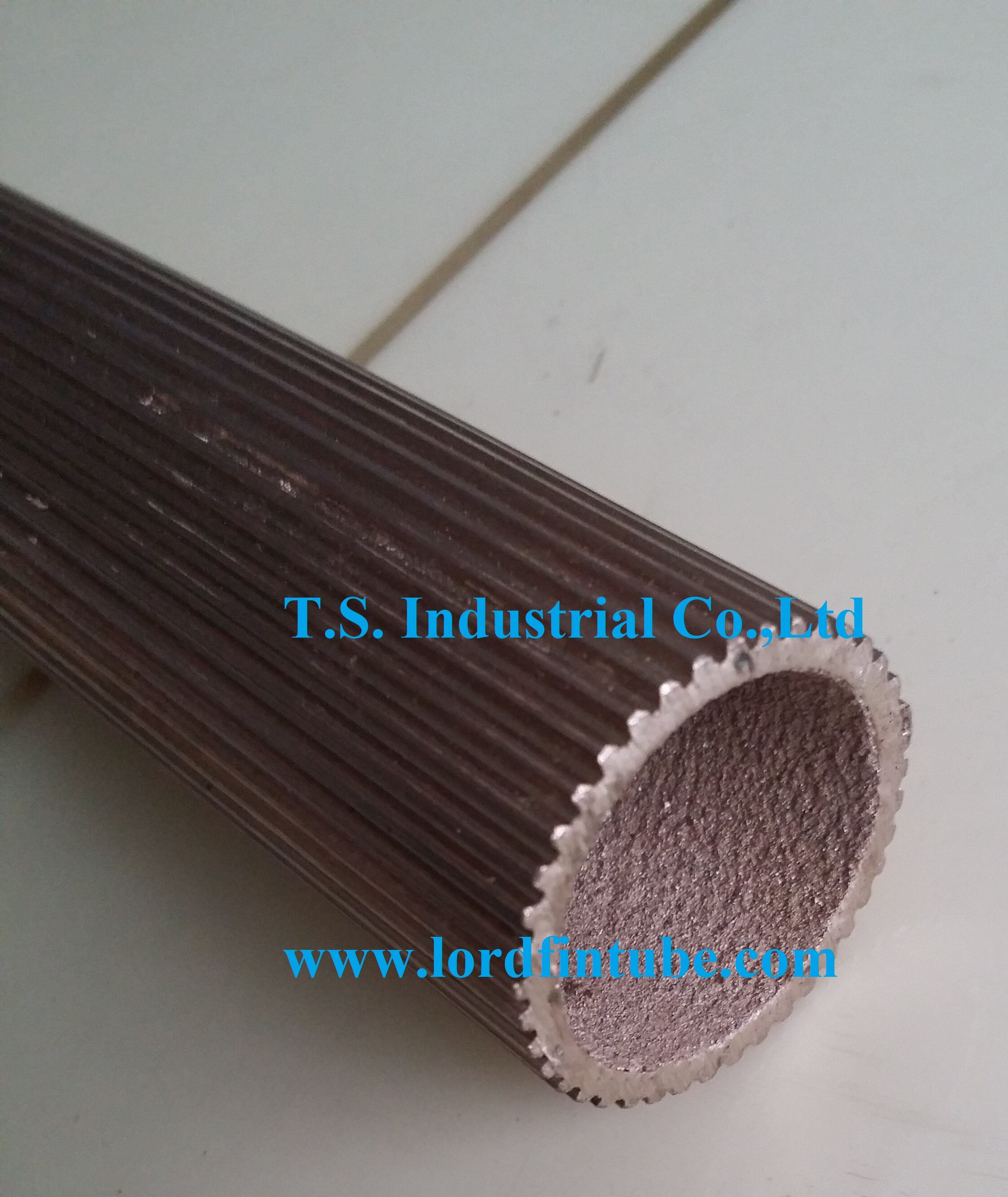Enhanced Heat Transfer Tube for Heat Exchanger
2025-06-17Leave a message
Enhanced heat transfer tubes refer to heat transfer elements designed to intensify the heat exchange between fluids flowing inside and outside the tube. Heat transfer enhancement is categorized into two types: enhancement for non-phase-change conditions and enhancement for phase-change conditions.
- For non-phase-change enhancement (inside tube fluid), methods include using spirally grooved tubes, corrugated tubes, twisted tubes, inserting internal devices (such as twisted tapes or wire coils), or inducing pulsating flow.
- For phase-change enhancement, single longitudinal fin tubes, low-finned tubes, serrated finned tubes, and radial finned tubes can be used for condensation of organics (e.g., alkanes, alkenes, and Freons), and surface porous tubes and double longitudinal fin tubes are applicable for boiling or evaporation.
This article details the technical characteristics of enhanced heat transfer tubes, the specifics of various types, and their practical applications.
1. Integral Low-Finned Tube
Low-finned tubes are manufactured by mechanically rolling fins of specific height, spacing, and thickness onto the outer surface of a plain tube. The fins and the base tube form a single, monolithic piece of metal, making it a single-metal finned tube.
Technical Parameters:
Process: Rolled from integral seamless tube
Material: Stainless steel, Titanium alloy, Nickel alloy
Types:
- External low fins + Internal smooth bore
- External low fins + Internal spiral rifling

Integral Low Finned Tube
2. T-fin low finned tube/Gewa-T Tube/T-Shaped Grooved Tube
The structural feature of the T-fin tube is a spiral fin with a T-shaped cross-section formed on the metal tube surface using a rolling technique.

T-Fin Low Finned Tube
Working Principle of T-Fin Design:
As seen in the fin structure diagram, the gap between any two adjacent fins on this tube type is wider at the bottom and narrower at the top.
When the medium outside the tube is heated, a series of vapor nuclei form at the bottom of the gaps between fins. Since the grooves are heated from all sides, the vapor nuclei rapidly expand to fill the entire bottom section.
Continued heating causes the vapor pressure inside the bubbles to increase rapidly, forcing them to jet out violently through the narrow slit at the top of the gap. This jetting action carries significant scouring force and creates local negative pressure, drawing in surrounding cooler liquid into the T-shaped tunnel, sustaining continuous boiling.
This boiling mechanism removes far more heat per unit time and per unit surface area than a plain tube. Consequently, this tube type possesses superior boiling heat transfer capability.
Features:
- Excellent heat transfer effect, efficiency exceeding 3 times that of plain tubes.
- Saves heat transfer area ≥ 30%.
- Resists fouling buildup both internally and externally.
3. Sintered Surface Porous Tube (High-Flux Tube)
This heat transfer tube enhances boiling heat transfer by using powder sintering to create a porous metal layer with numerous vapor nucleation sites on the outer or inner surface of a metal tube. The heat transfer performance of porous surface tubes can reach up to 15.6 times that of plain tubes, significantly improving heat transfer efficiency.
Types (Based on Porous Layer Location):
- Externally Sintered High-Flux Tube: Enhances external boiling heat transfer.
- Internally Sintered High-Flux Tube: Enhances internal boiling heat transfer.

High Flux Tube
Technical Parameters:
Base Tube Material: Carbon steel, Alloy steel, Stainless steel, Copper & Copper alloys
Sintered Powder Type: Fe-based alloy, Cu-based alloy, Cu-Ni alloy, etc.
Tube Shape: Straight tube, U-Bent
Tube Dimensions:
- OD: 19mm - 32mm
- Length: 3 - 12m (-0mm / +10mm tolerance)
- Plain End Length: 200mm or as required
Porous Layer:
- Thickness: 0.1mm - 0.3mm
- Porosity: 30% ≤ R ≤ 70%
Product Types:
- Externally Sintered Porous Layer
- Internally Sintered Porous Layer
- External Longitudinal Grooves + Internally Sintered Porous Layer
- Externally Sintered Porous Layer + Internal Low Fins
4. Twisted Tube
The structural characteristic of the twisted tube is that any cross-section within its heat transfer section is elliptical. Starting as a round base tube, it is flattened and then twisted into shape. Its unique structure induces spiral flow in both the tube-side and shell-side fluids simultaneously, promoting enhanced turbulent flow.
Available Material: Stainless steel, Carbon steel, Copper & Copper alloys
Advantages:
- Low pressure drop
- Resists fouling
- High heat transfer efficiency
Twisted tubes are suitable for enhancing heat transfer where the tube-side resistance is controlling, applicable in non-phase-change, boiling, and condensation scenarios.

Twisted Tube
5. Stainless Steel Corrugated Tube
Corrugated tubes are manufactured by applying special processes to standard heat transfer tubes, resulting in a tube with concave-convex corrugations on both its inner and outer surfaces. This design provides dual-side enhancement for both internal and external heat transfer.
Advantages of Corrugated Tubes:
- High heat transfer coefficient
- Can withstand low to medium pressure, strong corrosion resistance, long service life
- Can accommodate significant temperature differences
- Prevents fouling and facilitates cleaning
Compared to Plain Tubes:
The presence of peaks and valleys inside corrugated tubes enhances radial convective heat exchange within the tube bundle.

Corrugated Tube vs Bare Tube
Replacing plain tubes with corrugated tubes in a corrugated tube heat exchanger causes the fluid velocity and direction to change continuously, creating significant turbulence. This ensures all fluid has the opportunity to exchange heat with the tube wall, eliminating the limiting effects of the thermal boundary layer. The overall heat transfer coefficient can be increased by 2 to 3 times, and in actual operation, it can sometimes reach up to 5 times.

